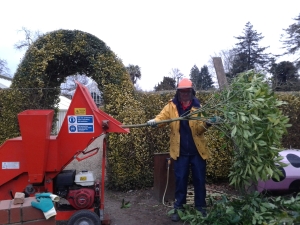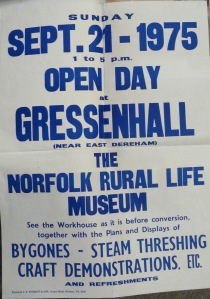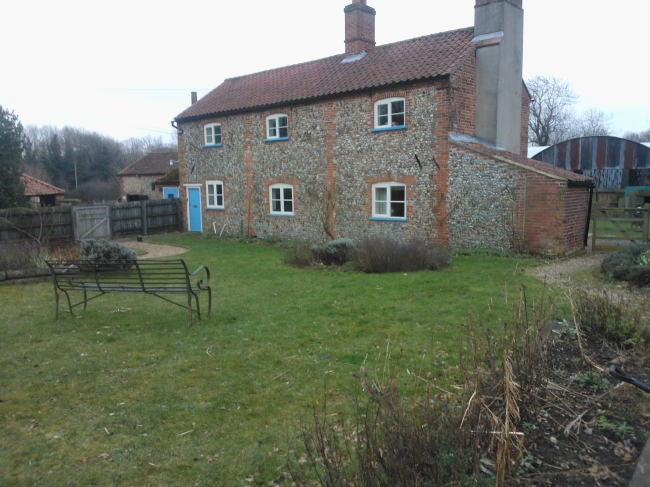As a Heritage Gardening Trainee, I get to spend one day a week at the National Trust’s Peckover House in Wisbech. This is always a good day. The team of gardeners there are great fun to be with and the gardens themselves are a lovely place to work. (Well worth a visit too!) Having come to realise that you can have the most wonderful location and a terrible working atmosphere at the same time, good rapport within the team is not to be dismissed lightly. Fortunately, Peckover suffers from no such problems and I know I’ll miss it when my time under Skills for the Future is up.
Laughter – and cake for that matter – is what I think about when I think about Peckover, and one recent day in the gardens was no exception. Peckover gives you the opportunity to use a variety of machines – lawnmowers, aerators, scarifiers etc – but it is the Piranha shredder that has now gained a special place in my heart. This huge, red, Italian-built monstrosity had been out of action since I arrived, but had now been miraculously brought back to life through the combined efforts of Peckover’s very own Jenny Windsor and Damon Hill (not the racing driver) – a man who can seemingly repair anything and who works at Peckover’s sister property at Oxburgh Hall.
Myself and National Trust trainee gardener Holly were tasked with shredding a Mount Vesuvius-sized pile of garden material one recent Thursday – a daunting task at the best of times, particularly when there are lots of rose prunings to work through. Finding your way around any new machine can also focus your mind, and this was a very large, vicious-looking thing. We needn’t have worried however. For both Holly and myself, this was the machine we had been waiting for since last September. Clad like cut-price Robocops, we immediately realised that this was the machine that could eat anything. As random thoughts pop into your head during any repetitive activity, I was immediately reminded of an old episode of Star Trek which featured a giant doomsday machine lumbering through the galaxy consuming planets and any passing starship that didn’t have William Shatner in it. (He was usually required for the next episode.) The Piranha shredder was just such a machine and we were loving every minute of it.

The pile of material was disappearing worryingly quickly. We were enjoying ourselves too much. There is something inherently enjoyable about destruction – about munching your way through a problem – not least when you’re left with beautifully textured compost. There was nothing this machine couldn’t cope with. Holly and I began gifting each other nice chunky sections of shrub and tree – we wanted to share the pleasure. Even beneath the Robocop headgear, you could see the smiles. Open-mouthed, we would stare into the abyss and watch shrubs with the girth of a supermodel’s waist disappear past the spiked drum and thrown out of the machine as a fine mulch. At one point I think I even saluted the Piranha as a vast chunk of garden was digested and spat out the end. Holly laughed.
The process was deceptive too. What came out seemed a lot less than what went in, if that is possible. We wondered whether some of the material was going over the wall and landing on the busy road behind the garden. We thought we may have been causing a traffic jam, but no, Wisbech’s transport system was unaffected. Everything was indeed going on the compost heap.
Before long, the pile of material to be shredded had disappeared completely. We switched the Piranha off with regret. With our ears still ringing, silence fell across the town and birds started singing once again. We lovingly brushed the machine down and towed it back to the machine shed. We retreated to the gardeners’ retreat above the stables smiling from ear to ear. The team thought we were odd, but we understood. The doomsday machine had worked its magic and swallowed another two willing victims.
Michael Jordan, Heritage Gardening Trainee






